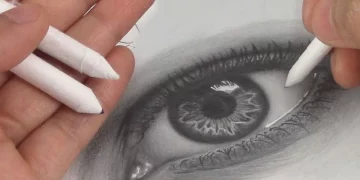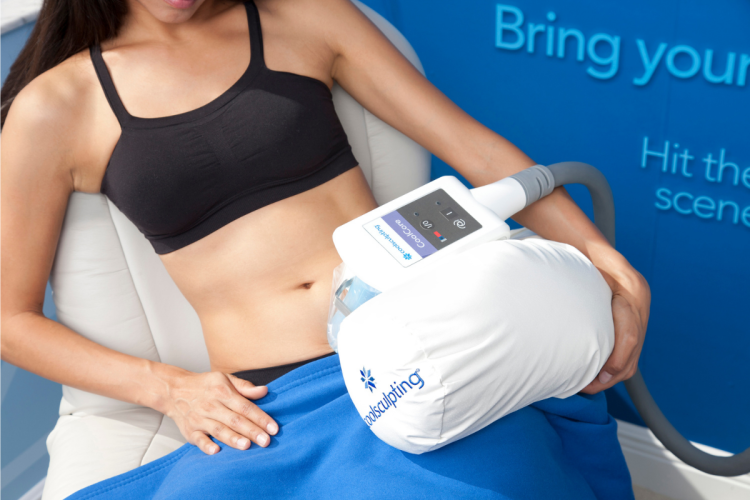Body contouring procedures have become increasingly popular in recent years, as individuals seek ways to target stubborn fat that resists diet and exercise. Among the many options available, liposuction has long been considered the gold standard for fat removal. However, in recent years, a non-invasive alternative known as Cryolipolysis, commonly referred to as CoolSculpting, has gained widespread attention. But is Cryolipolysis a safe and effective alternative to traditional liposuction? In this article, we will explore the key differences between Cryolipolysis and liposuction, how Cryolipolysis works, the ideal candidates for the treatment, the expected results, and the potential risks and side effects.
Introduction: Understanding Cryolipolysis vs. Liposuction
Cryolipolysis, also known by the brand name CoolSculpting, is a non-invasive cosmetic procedure designed to target and reduce stubborn fat cells by freezing them. It is marketed as a less invasive alternative to liposuction, a surgical procedure that removes fat through suction. CoolSculpting is based on the concept that fat cells are more susceptible to cold temperatures than other cells in the body, allowing them to be selectively frozen and eliminated without damaging surrounding tissues.
Liposuction, on the other hand, involves the use of a surgical procedure to physically remove fat from specific areas of the body. This is typically done through a small incision, with a tube (cannula) inserted into the targeted fat areas to suction out the excess fat. Liposuction offers more immediate and dramatic results, but it also comes with a longer recovery period, potential complications, and a higher cost compared to non-invasive treatments like Cryolipolysis.
Both treatments are designed to address localized fat deposits that are resistant to diet and exercise, but they differ significantly in their approach, invasiveness, and recovery times. In this article, we will examine how Cryolipolysis works and explore whether it can serve as a safe and effective alternative to liposuction.
How It Works: Fat Freezing Process
Cryolipolysis works by targeting fat cells with controlled cooling, causing the fat cells to crystallize and break down over time. The process begins when a specialized applicator is placed on the target area. The applicator uses vacuum suction to draw the skin and underlying fat into a cooling device that freezes the fat cells. The fat cells are then subjected to temperatures below freezing, which causes the fat to crystallize and undergo apoptosis (cell death). Over the course of the following weeks, the body naturally processes and eliminates the dead fat cells through the lymphatic system.
One of the most significant advantages of Cryolipolysis is that it is a non-invasive procedure. Unlike liposuction, which requires anesthesia and incisions, CoolSculpting is performed without the need for needles or surgery. The procedure typically takes around 35 to 60 minutes per treatment area, depending on the size of the area being treated. The applicator is simply placed on the skin, and patients experience a sensation of intense cold followed by numbness as the fat cells are targeted.
While the cooling process targets fat cells specifically, it does not affect other tissues such as skin, muscles, or nerves. This precision is one of the reasons why Cryolipolysis is considered a safe, non-invasive alternative to liposuction.
Ideal Candidates: Best Body Types and Areas for Treatment
Cryolipolysis is designed to treat areas of stubborn fat that are resistant to diet and exercise. It is important to note that Cryolipolysis is not a weight-loss treatment but rather a body contouring procedure. Ideal candidates for Cryolipolysis are individuals who are within 20 to 30 pounds of their ideal weight and have localized fat deposits that they want to reduce. Those who are significantly overweight or obese may not be suitable candidates for Cryolipolysis, as the procedure is not intended for significant weight loss.
Common treatment areas for CoolSculpting include:
- Abdomen: Stubborn belly fat is one of the most commonly treated areas with Cryolipolysis. Both the upper and lower abdomen can be treated to target excess fat.
- Flanks (Love Handles): Fat around the sides of the waist, commonly referred to as love handles, is another popular treatment area for Cryolipolysis.
- Thighs: Both the inner and outer thighs can be treated to reduce the appearance of excess fat.
- Double Chin: Cryolipolysis can be used to treat the fat beneath the chin and along the jawline, which can help create a more defined contour.
- Back: Areas of fat on the upper and lower back can also be treated with CoolSculpting to create a smoother silhouette.
Cryolipolysis is particularly effective for patients who have pockets of fat that do not respond to exercise or dieting. However, it is not suitable for individuals with significant sagging skin or those who are seeking a dramatic fat reduction. Liposuction may be a better option for individuals who have larger amounts of fat to remove or require more significant body contouring.

Results and Expectations: How Long Before You See Results
The results of Cryolipolysis are not immediate, as it takes time for the body to naturally process and eliminate the frozen fat cells. Most patients will start to see noticeable results about three weeks after the procedure, with optimal results typically appearing around two to three months post-treatment. The treated area will gradually look slimmer and more contoured as the body eliminates the dead fat cells.
It is important to understand that Cryolipolysis is not a quick-fix solution. Multiple treatments may be necessary to achieve the desired results, depending on the size of the treatment area and the amount of fat being targeted. Many patients undergo two to three sessions per area for optimal outcomes.
While the results are long-lasting, they are not permanent. The body will continue to age and accumulate fat over time, so maintaining a healthy lifestyle with a balanced diet and regular exercise is essential to preserving the results of Cryolipolysis.
Risks and Side Effects: Possible Bruising, Numbness
Although Cryolipolysis is a non-invasive procedure, it is not without its risks and potential side effects. The most common side effects of CoolSculpting include:
- Redness and Swelling: After the treatment, the treated area may appear red and swollen. This is a normal response to the cooling process and typically subsides within a few hours to a few days.
- Bruising: Some patients may experience bruising at the treatment site, particularly if the suction was applied with more intensity. This bruising is usually mild and resolves on its own within a few days to a week.
- Numbness: It is common for the treated area to feel numb for several hours or even a few days following the procedure. This is due to the cold temperature used to freeze the fat cells and is typically temporary.
- Paradoxical Adipose Hyperplasia (PAH): A rare but serious side effect of Cryolipolysis is paradoxical adipose hyperplasia, where the fat cells in the treated area actually grow larger rather than shrinking. This side effect occurs in a very small percentage of patients and may require additional treatment, such as liposuction, to correct.
- Skin Sensitivity: Some patients may experience temporary skin sensitivity, tingling, or a mild burning sensation after the procedure, although these symptoms generally resolve within a few days.
Overall, Cryolipolysis is considered a safe procedure with minimal risks when performed by a qualified professional. However, as with any cosmetic treatment, it is essential to consult with a licensed provider to assess your suitability for the procedure and ensure you are fully informed of the potential risks and benefits.
Conclusion: A Non-Invasive Option Worth Considering?
Cryolipolysis (CoolSculpting) is a promising, non-invasive alternative to liposuction for individuals seeking to reduce stubborn fat deposits and improve body contours. The procedure offers several advantages over traditional liposuction, including no need for surgery, no anesthesia, and minimal downtime. While the results are gradual and may require multiple sessions, Cryolipolysis can provide noticeable improvements in fat reduction without the risks and recovery time associated with invasive liposuction.
However, Cryolipolysis is not a one-size-fits-all solution. It is best suited for individuals who are close to their ideal body weight and have localized fat deposits that do not respond to diet or exercise. Those who require more significant fat removal or who have large amounts of excess skin may be better suited for liposuction or other more invasive procedures.
Ultimately, the decision between Cryolipolysis and liposuction should be made in consultation with a qualified cosmetic professional, who can help assess your individual needs and recommend the best treatment option based on your goals, body type, and medical history.












































